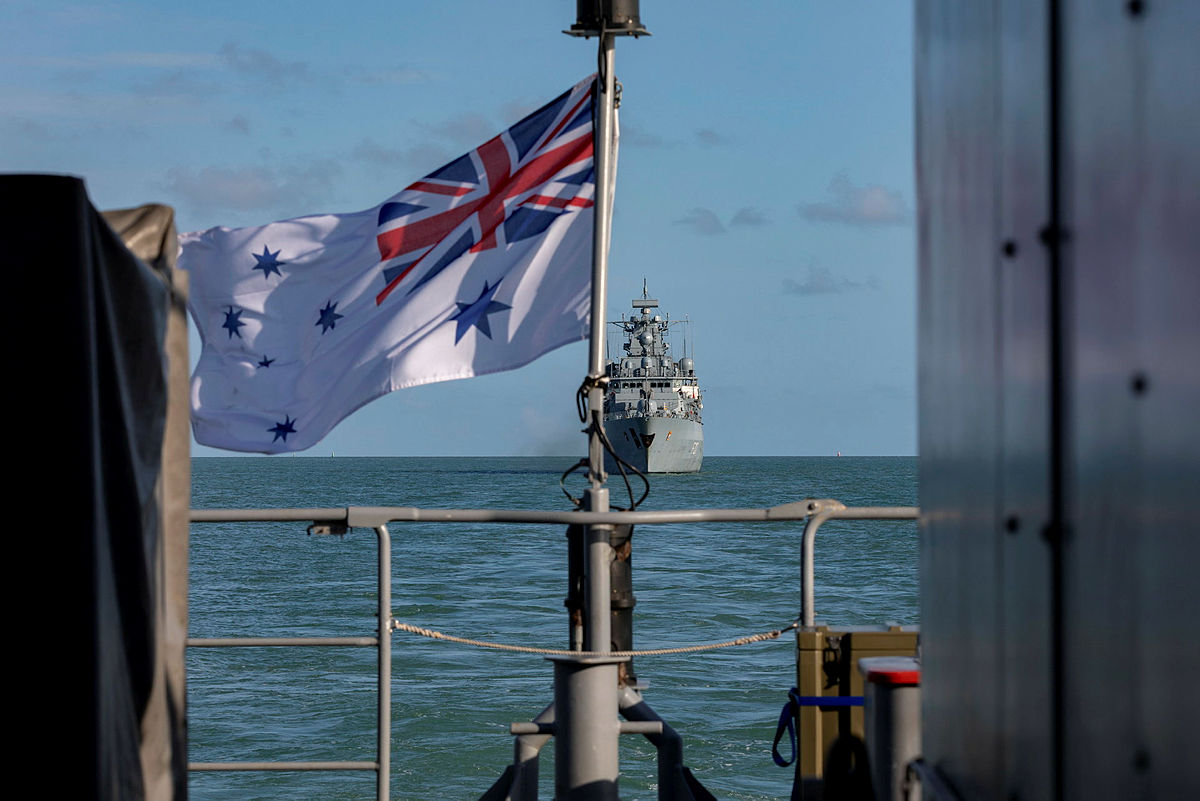
There are both far-reaching opportunities and new challenges for the Department of Defence, industry and local governments when it comes to maritime sustainment in Australia’s north.
Traditional Defence and industry models used in Australia’s southern states have less utility in the north if they aren’t adapted to the region’s unique economic context. A deeper understanding of industry capability in the north, coupled with greater collaboration and partnering, is needed to overcome those challenges and take advantage of the opportunities that abound in northern Australia.
Our new ASPI report, Northern sovereign maritime sustainment, launched today, explores the future of maritime sustainment in Australia’s north through the lens of regional maintenance centres proposed under Defence’s Plan Galileo. Included in the report is consideration of the strategic environment and implications for the north, an overview of the Royal Australian Navy’s maritime sustainment model and of Plan Galileo, and discussion of the US approach to maritime sustainment.
The report highlights opportunities that could arise from improved collaboration between Defence, local governments, defence industry, and small and medium-sized enterprises. This report has again reinforced the need for the Australian government to articulate how it will leverage northern Australia’s strategic geography as a strength, both now and in a future conflict.
Our report explores the potential to gain strategic advantage by leveraging cross-sectoral investment to create economies of scale and develop a scalable industry base. Such framing can produce greater clarity and align crucial economic, social and national-security decisions. Harmonised positioning is essential when considering maritime sustainment in the north.
We also consider how current market forces can restrict or prevent the achievement of government goals. Commercial competition in an economically ‘small’ north can be fierce, and there’s a need to emphasise whole-of-north outcomes.
Finally, the report considers the role of northern Australia in the Australian Defence Force’s maritime sustainment and its contribution as a centrepiece in joint force cooperation through the Quad and AUKUS. A joint approach will help achieve our national interests beyond the defence realm in a complex geopolitical landscape characterised by an increasing number of players and expanding needs.
The Australian government needs to consider how to harness interests from different fields and identify points where it may have to intervene with policies—and investments—that shape and enhance market forces. That’s a big shift from just thinking through how it might take advantage of market forces and existing capacities and capabilities as circumstances change.
The report emphasises the need for defence industry to establish more collaborative subcontractor arrangements that even out commercial peaks and troughs for small and medium-sized enterprises. This is a critical step in building sustainable maritime capability and capacity given that the economics that apply in southern Australia’s larger cities don’t work in the north. Local businesses are willing to support each other in meeting clients’ needs. And there’s a greater level of collaboration in remote regions with smaller populations, which is a big plus for defence industry.
In developing the report, we consulted representatives from Defence; people representing the interests of state, territory and local governments in northern Australia; port operators; business organisations; and the defence industry. Funding support for the production of the report was provided by the Thales Group.
Our engagement revealed traditional challenges, misunderstandings and some dated assumptions. It also highlighted opportunities that could arise from Defence improving communication, embracing interdependence between stakeholders and establishing partnerships. Often, our research interviews encompassed the discussion of innovative ideas about what could be done in northern Australia. They also revealed that there was a lack of strategic certainty about what role northern Australia ‘should’ play in most cases.
An increased focus on maritime sustainment in the north will drive many benefits for local communities, but flow-on impacts must also be considered, such as the need to upgrade road infrastructure to accommodate additional traffic and heavier vehicles, source additional housing to accommodate workforce growth, and provide social infrastructure to encourage families to move to an area.
Defence can also drive positive market influence by expressing the intent to be an ‘anchor client’ for infrastructure and capability development.
We found that businesses and governments in the north are ready to contribute but they’re preparing without clarity from Defence on what is needed.
It’s also apparent that because capability development (including infrastructure and workforce) has long lead times, a commitment is required in order to foster investment. And niche defence needs can’t be met through standard commercial capability arrangements.
To some extent, Defence recognises that sustainment operations in the north and the north’s economies are different to those in the south. However, more open engagement is needed to fully understand the north and harness the opportunities it presents.

